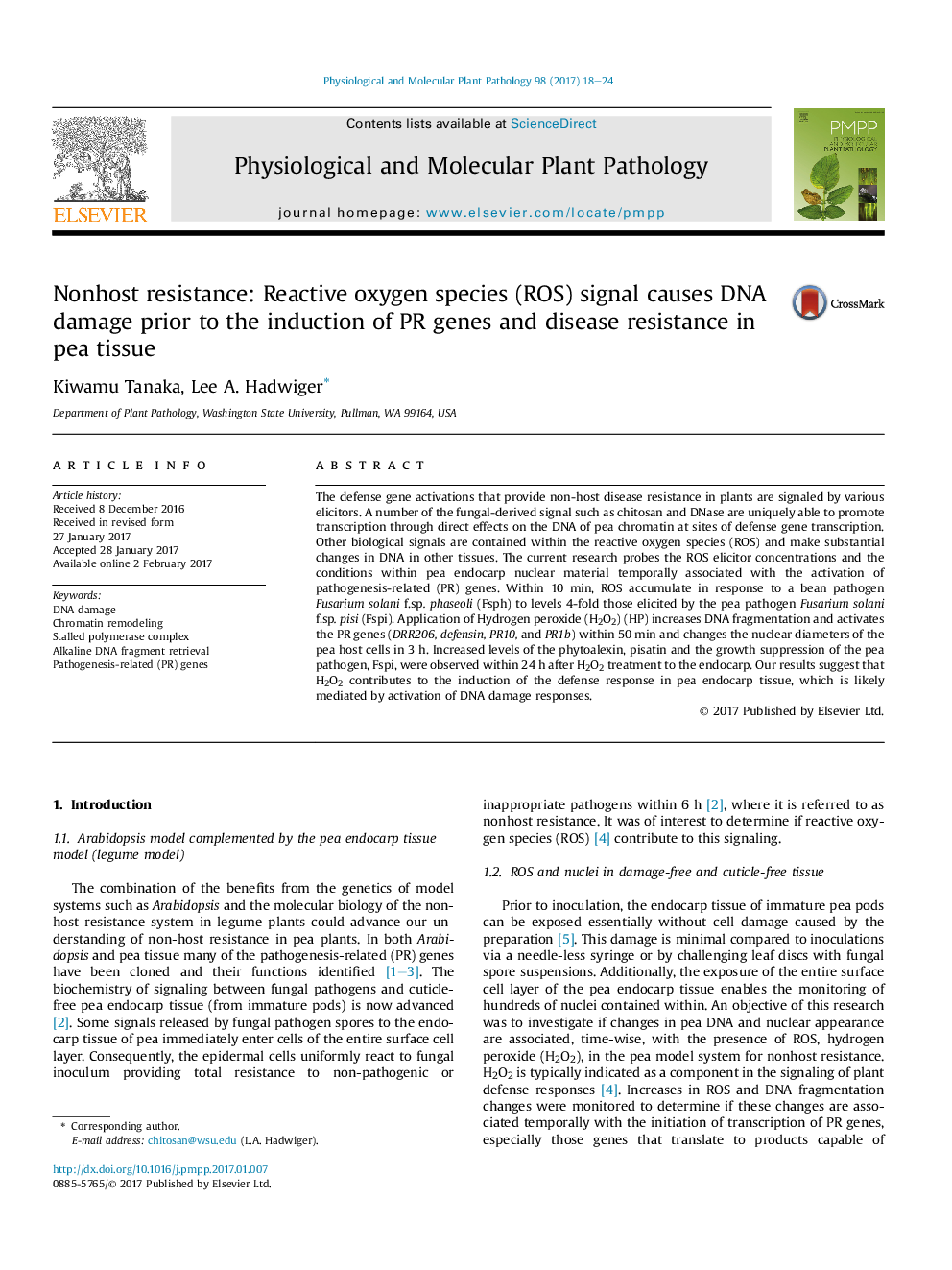| کد مقاله | کد نشریه | سال انتشار | مقاله انگلیسی | نسخه تمام متن |
|---|---|---|---|---|
| 5592604 | 1570841 | 2017 | 7 صفحه PDF | دانلود رایگان |
عنوان انگلیسی مقاله ISI
Nonhost resistance: Reactive oxygen species (ROS) signal causes DNA damage prior to the induction of PR genes and disease resistance in pea tissue
دانلود مقاله + سفارش ترجمه
دانلود مقاله ISI انگلیسی
رایگان برای ایرانیان
کلمات کلیدی
موضوعات مرتبط
علوم زیستی و بیوفناوری
علوم کشاورزی و بیولوژیک
دانش گیاه شناسی
پیش نمایش صفحه اول مقاله

چکیده انگلیسی
The defense gene activations that provide non-host disease resistance in plants are signaled by various elicitors. A number of the fungal-derived signal such as chitosan and DNase are uniquely able to promote transcription through direct effects on the DNA of pea chromatin at sites of defense gene transcription. Other biological signals are contained within the reactive oxygen species (ROS) and make substantial changes in DNA in other tissues. The current research probes the ROS elicitor concentrations and the conditions within pea endocarp nuclear material temporally associated with the activation of pathogenesis-related (PR) genes. Within 10Â min, ROS accumulate in response to a bean pathogen Fusarium solani f.sp. phaseoli (Fsph) to levels 4-fold those elicited by the pea pathogen Fusarium solani f.sp. pisi (Fspi). Application of Hydrogen peroxide (H2O2) (HP) increases DNA fragmentation and activates the PR genes (DRR206, defensin, PR10, and PR1b) within 50Â min and changes the nuclear diameters of the pea host cells in 3Â h. Increased levels of the phytoalexin, pisatin and the growth suppression of the pea pathogen, Fspi, were observed within 24Â h after H2O2 treatment to the endocarp. Our results suggest that H2O2 contributes to the induction of the defense response in pea endocarp tissue, which is likely mediated by activation of DNA damage responses.
ناشر
Database: Elsevier - ScienceDirect (ساینس دایرکت)
Journal: Physiological and Molecular Plant Pathology - Volume 98, April 2017, Pages 18-24
Journal: Physiological and Molecular Plant Pathology - Volume 98, April 2017, Pages 18-24
نویسندگان
Kiwamu Tanaka, Lee A. Hadwiger,